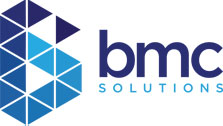Tips on Getting Rid of Malware and Viruses
It’s undeniable that nowadays, people have become more dependent on computers. Social networking, business and the field of entertainment have been intensely influenced by computers and internet. Billions of people around the world own a computer. Many people have utilized this modern technology for the convenience of doing activities such as money dealing, shopping, getting employed and communicating to other people. Contrary to the benefits of computers and internet is the negative part of this uprising digital innovation, the increase of threat and malicious software. Developers of anti-virus software battle in opposition to the makers of computer viruses in an endless attempt to get rid of the destruction malware causes. The most essential tool a consumer should probably have is security software. On the other hand, the utilization of security software is not enough to protect your system from malware. People should also take on and exercise particular actions to add to the efficiency of these programs. Below are some effective ways to help you prevent your computer from malware and viruses.
- As previously stated above, implementing and running security program is the top priority to avoid threats and viruses on your system. However, it doesn’t end there. It is also a must to maintain the database up to date and run virus scans, whether it is manual or automated, regularly. What make these processes simple are the best anti-virus scans available. There are also programs that are purposely intended for spyware, malware and adware that strengthen your anti-virus software. Examples of them are Malwarebytes and Spybots.
- The efficiency of the software can also be improved by the built-in firewalls in each operating system. It serves as an extra protection in opposition to malwares from different locations by filtering the data that comes in and comes out of your system.
- To make the most of your system’s capability to avert malwares, you may set up your browser’s security settings. Also, you could also keep the anti-virus settings updated by maintaining the operating system itself up to date.
- Be aware of email attachments. It’s possible that the sender’s system is already infected by a threat and could possibly infect yours through email attachments. If you’re unsure about the email you may communicate with the person to make sure that they intended to send you the file. Most security software scans email attachments to prevent viruses before they got the possibility to contaminate your system.
- File sharing also is one of the causes of viruses. Beware of the files that you’re downloading. Be alert that porn sites are the disreputable sources of threats and malwares. But high-quality anti-virus software will prioritize to check these files sooner than it can arrive on your computer.
- Don’t let your system function idly for a long time. Being in front of the computer while it is on and being an element of your own security team is a great way to avoid the breakdown of your system’s way of defenses against threats.
- Make use of your instincts regarding any websites, email attachments or programs that you think are malicious. Most of the time, your gut feelings are an outstanding guide.
- Be updated regarding the new system viruses. If you got it from a genuine source, ensure that you update your anti-virus program and that the specific threat is blocked.
- Be cautious when plugging external drives on your system. Running a threat scan after plugging them will help you prevent viruses. When you are on sites like Facebook, be wary about entering any URLs that appears suspicious.
By doing the above mentioned guidelines in keeping an eye on your computer’s safety, you take part in preventing the negative means of those people who look for wicked joy in bringing harm to others. Altogether, we can struggle to help make the World Wide Web a secure place to have fun, learn, work and communicate.

